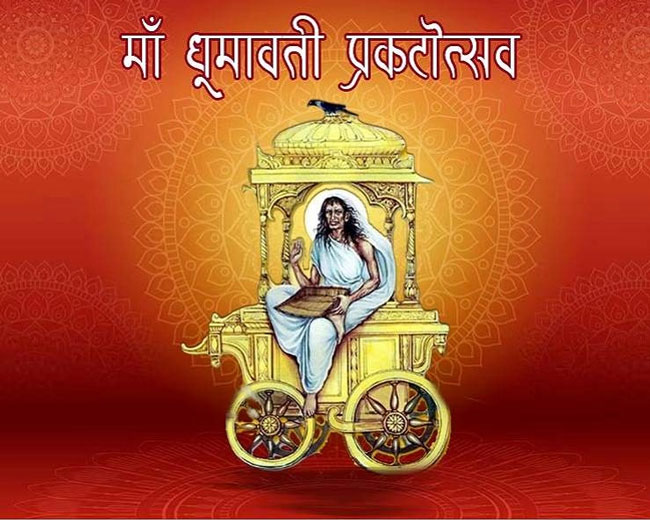 Among the many ten Mahavidyas, the seventh is the enigmatic and highly effective type generally known as Goddess Dhoomavati. Her Jayanti (divine look day) is noticed on the Ashtami Tithi (eighth lunar day) of the Shukla Paksha (waxing part) within the month of Jyeshtha. Within the Rigveda, this type of Sati is known as Sutara. Different names related along with her embody Jyeshtha, Alakshmi, and Nirriti.
Among the many ten Mahavidyas, the seventh is the enigmatic and highly effective type generally known as Goddess Dhoomavati. Her Jayanti (divine look day) is noticed on the Ashtami Tithi (eighth lunar day) of the Shukla Paksha (waxing part) within the month of Jyeshtha. Within the Rigveda, this type of Sati is known as Sutara. Different names related along with her embody Jyeshtha, Alakshmi, and Nirriti.
Iconography and Look
Goddess Dhoomavati represents renunciation, sorrow, and religious energy. She is portrayed with two arms — one holding a winnowing basket (soop), and the opposite in a boon-giving (varadamudra) or knowledge-bestowing gesture. Her type is depicted as that of a widowed, ugly, emaciated, and matted lady sporting white clothes, seated on a chariot with out horses. A crow, symbolizing omens, thriller, and religious perception, is perched atop her chariot as a flag or emblem.
The Story Behind Her Title
One legend traces the origin of Goddess Dhoomavati to the tragic story of Sati and her father King Daksha. When King Daksha organized a grand yajna (sacrificial ritual), he invited all gods and goddesses besides Shiva and Sati, as he disapproved of their marriage.
Upon listening to of the occasion, Sati initially felt harm however then thought, a daughter doesn’t want an invite to go to her father’s home. When she expressed her want to attend, Lord Shiva suggested towards it, explaining that it was improper for a married daughter to go uninvited. Sati, nonetheless, insisted and went anyway.
On the yajna, Daksha insulted her and demeaned Lord Shiva. Overcome with sorrow and anger, Sati immolated herself within the sacred hearth. The smoke that arose from her burning physique is believed to have manifested as Goddess Dhoomavati — a type born from grief, rejection, and religious transformation.
One other Legend
One other story speaks of Parvati, who as soon as grew to become extraordinarily hungry. At the moment, there was no meals on Mount Kailash, and Shiva was deep in meditation. In desperation, Parvati swallowed Lord Shiva himself. Although her starvation was appeased, poison in Shiva’s throat precipitated smoke to billow from her mouth, and her physique grew to become deformed and emaciated. When Shiva emerged from her physique, he declared, “From at the present time, you shall be worshipped as Dhoomavati — the smoky one. For consuming your husband in starvation, you shall take the type of a widow.”
Due to this curse-like situation, married girls historically don’t worship Dhoomavati. Nevertheless, she is commemorated as a goddess who dispels illness, poverty, and enemies.
Worship, Tantric Apply, and Sacred Websites
Worship of Dhoomavati is often completed going through the west route. In Tantric rituals, she is invoked for dispelling enemies, eradicating malefic results of the planet Ketu, and reaching religious detachment. Not like different deities, candy choices should not given to her; as an alternative, salty or pungent gadgets are supplied. Using brilliant colours or vivid clothes is prohibited in her worship — solely white or boring gray apparel is acceptable.
Essential sacred websites (siddhpeethas) related to Goddess Dhoomavati embody:
- Dhoomavati Temple in Datia, Madhya Pradesh — a revered Tantric website
- Dhoomavati Temple in Varanasi, Uttar Pradesh
- A shrine throughout the Kamakhya Temple advanced, Assam — an vital Tantric pilgrimage heart
Goddess Dhoomavati embodies the deep layers of the female religious expertise — rejection, sorrow, renunciation, and finally empowerment by way of asceticism. Although thought-about inauspicious in typical phrases, her type is sacred, protecting, and intensely transformative. She represents the silent power of the female that rises even from ashes and smoke, bearing the facility of stillness, data, and supreme liberation.




